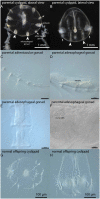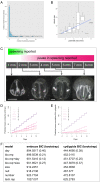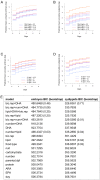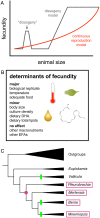Ctenophores are direct developers that reproduce continuously beginning very early after hatching
- PMID: 35476523
- PMCID: PMC9170174
- DOI: 10.1073/pnas.2122052119
Ctenophores are direct developers that reproduce continuously beginning very early after hatching
Abstract
A substantial body of literature reports that ctenophores exhibit an apparently unique life history characterized by biphasic sexual reproduction, the first phase of which is called larval reproduction or dissogeny. Whether this strategy is plastically deployed or a typical part of these species’ life history was unknown. In contrast to previous reports, we show that the ctenophore Mnemiopsis leidyi does not have separate phases of early and adult reproduction, regardless of the morphological transition to what has been considered the adult form. Rather, these ctenophores begin to reproduce at a small body size and spawn continuously from this point onward under adequate environmental conditions. They do not display a gap in productivity for metamorphosis or other physiological transition at a certain body size. Furthermore, nutritional and environmental constraints on fecundity are similar in both small and large animals. Our results provide critical parameters for understanding resource partitioning between growth and reproduction in this taxon, with implications for management of this species in its invaded range. Finally, we report an observation of similarly small-size spawning in a beroid ctenophore, which is morphologically, ecologically, and phylogenetically distinct from other ctenophores reported to spawn at small sizes. We conclude that spawning at small body size should be considered as the default, on-time developmental trajectory rather than as precocious, stress-induced, or otherwise unusual for ctenophores. The ancestral ctenophore was likely a direct developer, consistent with the hypothesis that multiphasic life cycles were introduced after the divergence of the ctenophore lineage.
Keywords: Mnemiopsis leidyi; ctenophore; dissogeny; larval reproduction; life history evolution.
Conflict of interest statement
The authors declare no competing interest.
Figures






Comment in
-
Reply to Soto-Angel et al.: Is "larva" a natural kind? Phylogenetic thinking provides clarity.Proc Natl Acad Sci U S A. 2023 Jan 24;120(4):e2219704120. doi: 10.1073/pnas.2219704120. Epub 2023 Jan 17. Proc Natl Acad Sci U S A. 2023. PMID: 36649416 Free PMC article. No abstract available.
-
Are we there yet to eliminate the terms larva, metamorphosis, and dissogeny from the ctenophore literature?Proc Natl Acad Sci U S A. 2023 Jan 24;120(4):e2218317120. doi: 10.1073/pnas.2218317120. Epub 2023 Jan 17. Proc Natl Acad Sci U S A. 2023. PMID: 36649425 Free PMC article. No abstract available.
References
-
- Hall B. K., Wake M. H., “Introduction: Larval development, evolution, and ecology” in The Origin and Evolution of Larval Forms, Hall B. K., Wake M. H., Eds. (Academic Press, 1999), pp. 1–20.
-
- Nielsen C., “Origin and diversity of marine larvae” in Evolutionary Ecology of Marine Invertebrate Larvae, Carrier T., Reitzel A., Heyland A., Eds. (Oxford University Press, 2018), pp. 3–15.
-
- Marlow H., “Evolutionary development of marine larvae” in Evolutionary Ecology of Marine Invertebrate Larvae, Carrier T., Reitzel A., Heyland A., Eds. (Oxford University Press, 2018), pp. 16–33.
-
- Sly B. J., Snoke M. S., Raff R. A., Who came first-larvae or adults? Origins of bilaterian metazoan larvae Life history modes and metazoan phylogeny. J. Dev. Biol. 47, 623–632 (2003). - PubMed
-
- Wang J., et al. , Evolutionary transcriptomics of metazoan biphasic life cycle supports a single intercalation origin of metazoan larvae. Nat. Ecol. Evol. 4, 725–736 (2020). - PubMed
Publication types
MeSH terms
LinkOut - more resources
Full Text Sources
Miscellaneous

